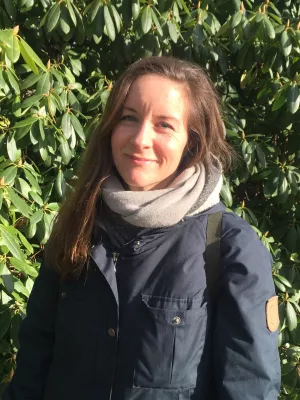
Maria von Post
Researcher

Species-Dependent Effects of the Urban Environment on Fatty Acid Composition and Oxidative Stress in Birds
Author
Summary, in English
Ecological impacts of urbanization include the loss of biodiversity and changes in species composition and population densities. However, how the urban environment affects fundamental physiological parameters is largely unknown. Here, we investigated physiological components related to health and nutrition, namely, plasma fatty acids (FA) and lipid peroxidation at inter-habitat and interspecific levels. Specifically, we compared four passerine bird species—the great tit (Parus major), the blue tit (Cyanistes caeruleus), the house sparrow (Passer domesticus), and the tree sparrow (P. montanus)—from urban and rural environments. Significant interactions between species and habitat were revealed for the majority of the FAs. Interestingly, the observed inter-habitat variation in FAs was frequently in opposite directions when comparing species from the two families (tits, Paridae; sparrows, Passeridae). These patterns suggest that sparrows and tits feed on different food sources, or modulate their FA metabolism differently, across the urban-rural gradient. By using canonical discriminant analyses (CDA), we further demonstrated species-specific signals in FA composition, with misclassification of species being <1% within habitats and <7% between habitats. Finally, the urban-rural FA differences between species and families were manifested in two indices of health. Firstly, urban blue tits had a higher total ω-6/ω-3 polyunsaturated FA ratio than rural conspecifics, which is believed to increase inflammatory responses. Secondly, urban sparrows of both species showed higher lipid peroxidation indices (indicating a higher susceptibility to lipid peroxidation if exposed to pro-oxidants), and consequently, a higher level of lipid peroxidation compared to their rural conspecifics. Collectively, the species- and habitat-specific differences in plasma FA composition, which are linked to nutrition and metabolism, suggest that the urban environment affect tits and sparrows primarily via two different pathways—inflammation and oxidative stress, respectively,—with potential consequences for the health of urban populations.
Department/s
- Evolutionary ecology
- Functional zoology
- Biodiversity
- BECC: Biodiversity and Ecosystem services in a Changing Climate
- Biodiversity and Conservation Science
- Life History and Functional Ecology
Publishing year
2017
Language
English
Publication/Series
Frontiers in Ecology and Evolution
Volume
5
Links
- Publication in Lund University research portal
- http://journal.frontiersin.org/article/10.3389/fevo.2017.00044/full?&utm_source=Email_to_authors_&utm_medium=Email&utm_content=T1_11.5e1_author&utm_campaign=Email_publication&field=&journalName=Frontiers_in_Ecology_and_Evolution&id=260764
- http://dx.doi.org/10.3389/fevo.2017.00044
Document type
Journal article
Publisher
Frontiers Media S. A.
Topic
- Zoology
- Ecology
Keywords
- oxidative stress
- urban ecology
- Urbanization
- fatty acid
- ornithology
- diet
- lipid peroxidation
- omega-3
- omega-6
- Paridae,
- Passeridae
- polyunsaturated fatty acid
- urbanization
- Parus major
- Cyanistes caeruleus
- Passer domesticus
- Passer montanus
Status
Published
Research group
- Biodiversity and Conservation Science
- Life History and Functional Ecology
ISBN/ISSN/Other
- ISSN: 2296-701X